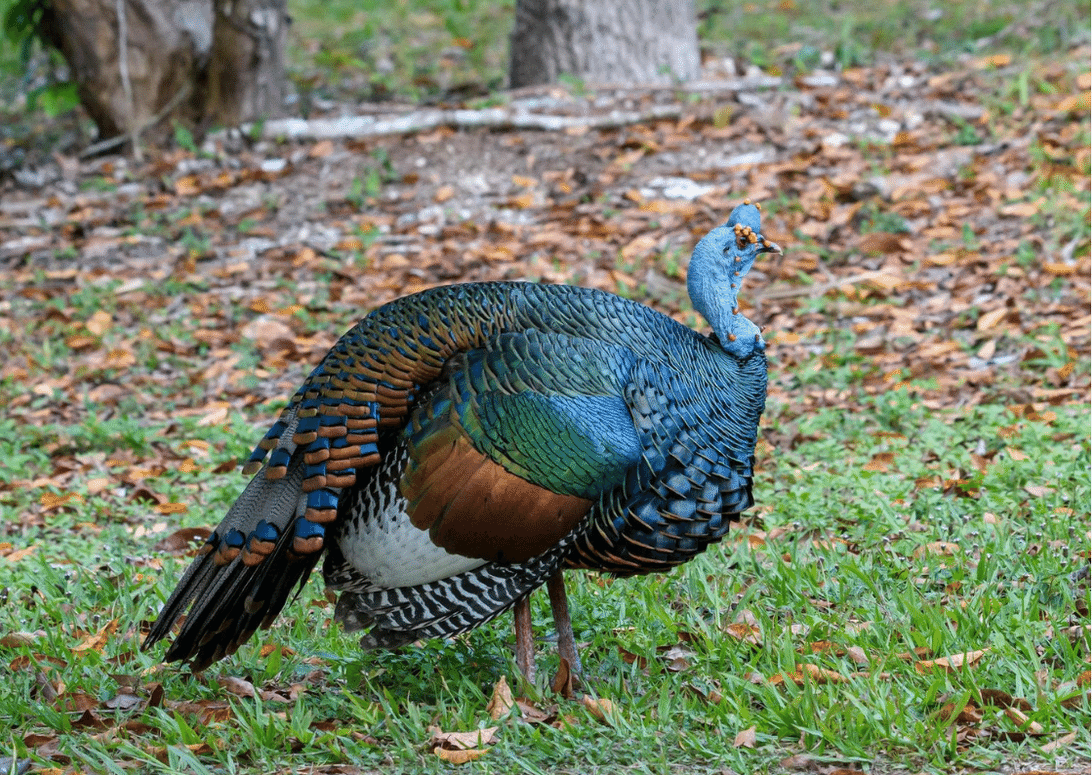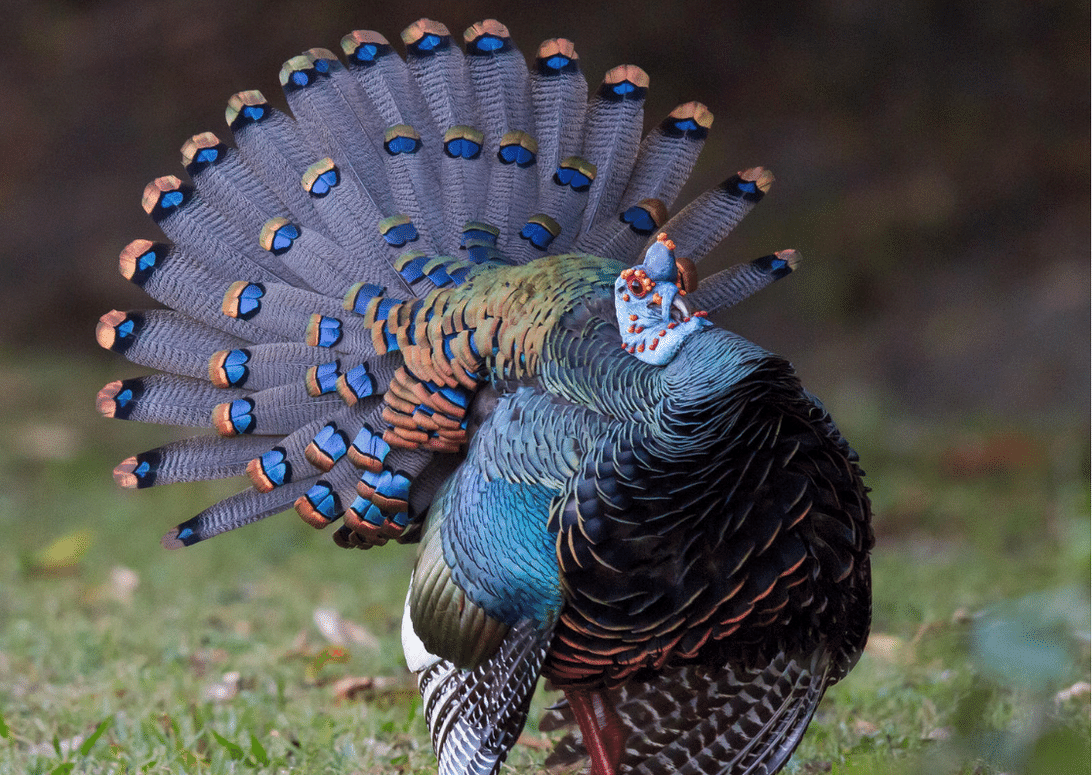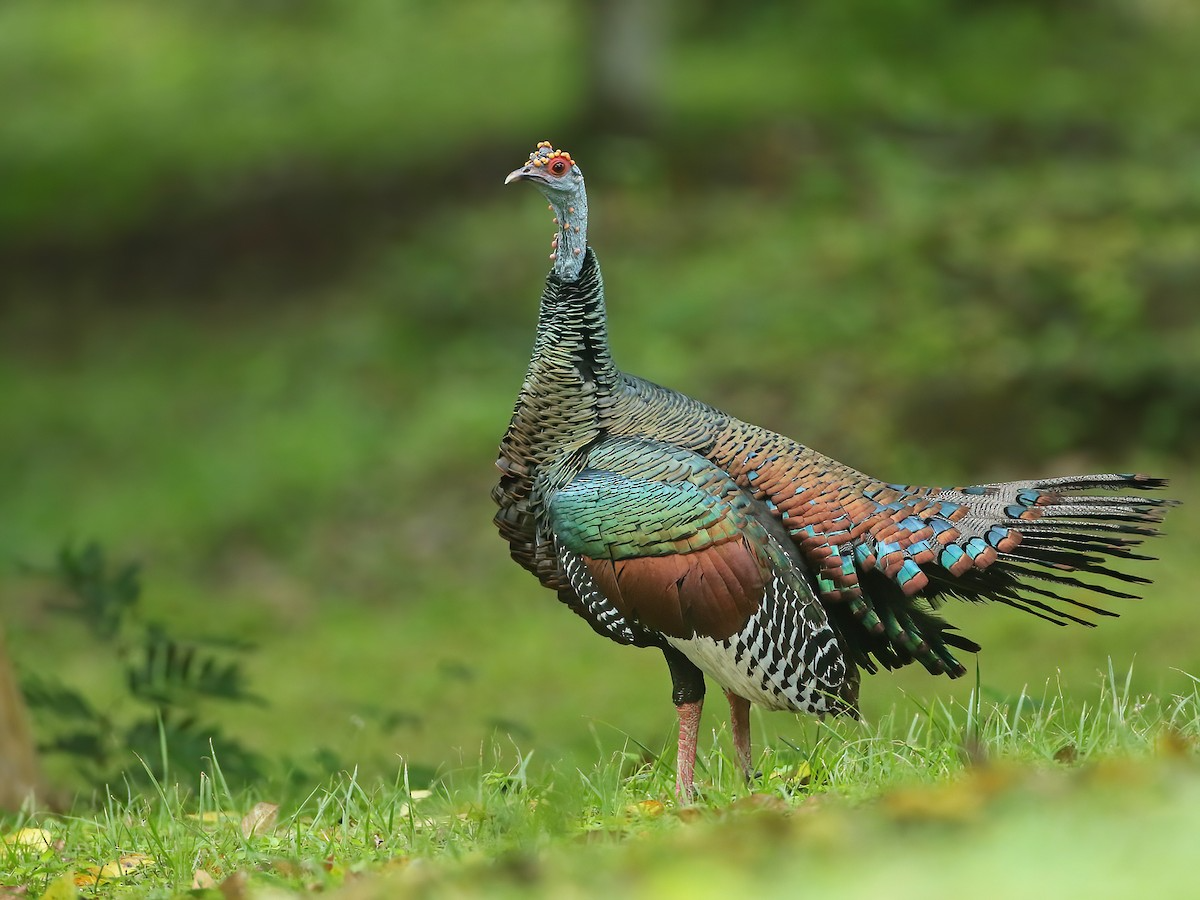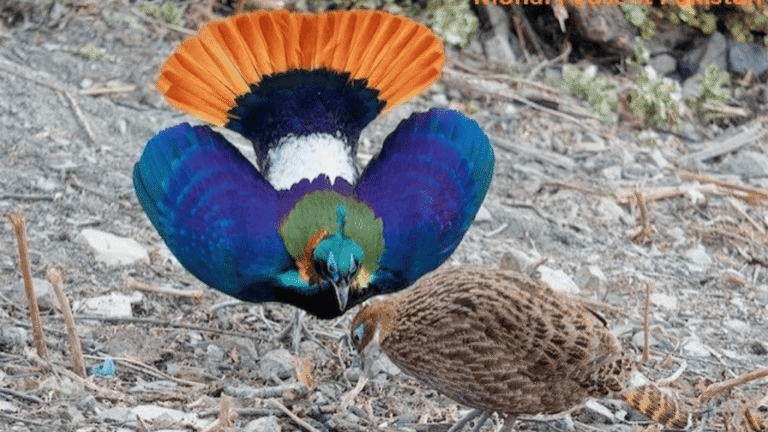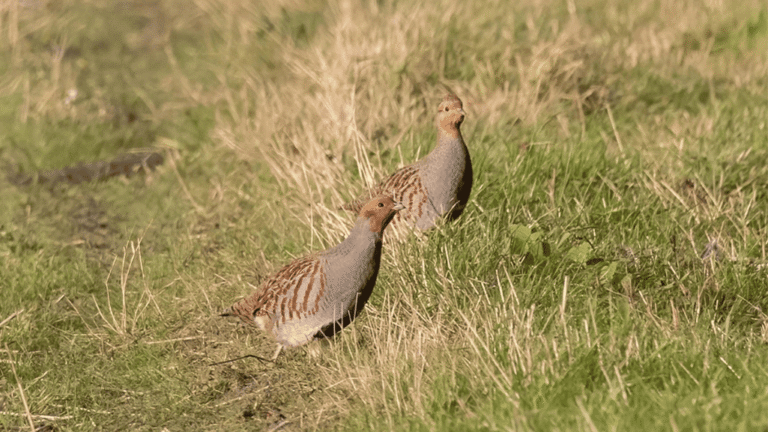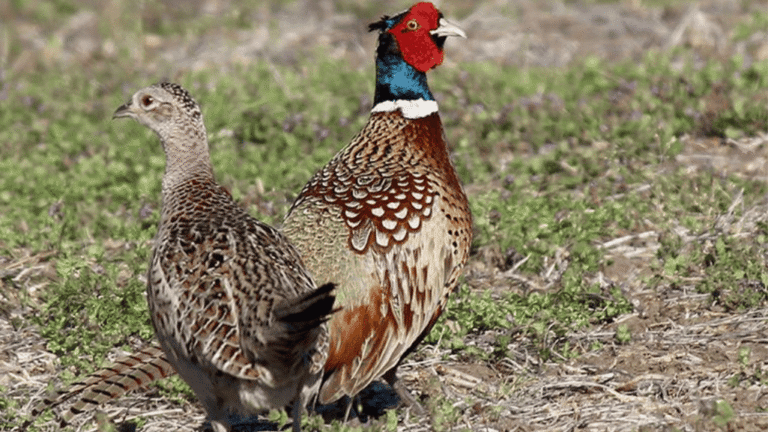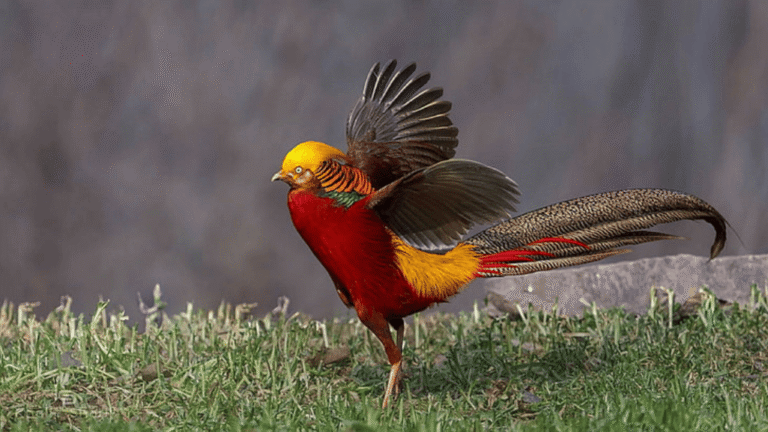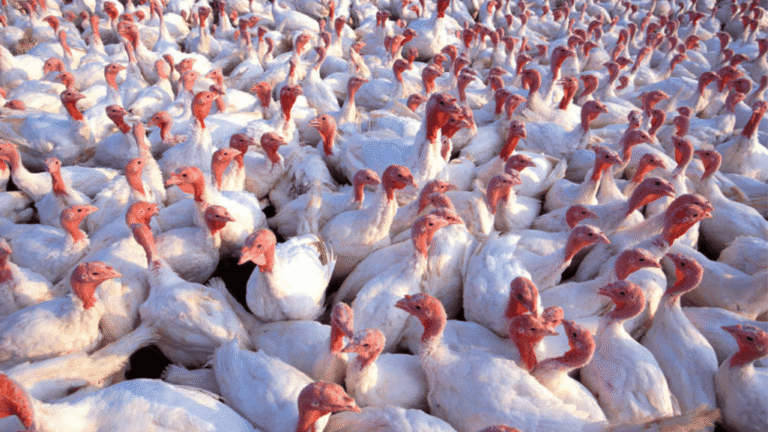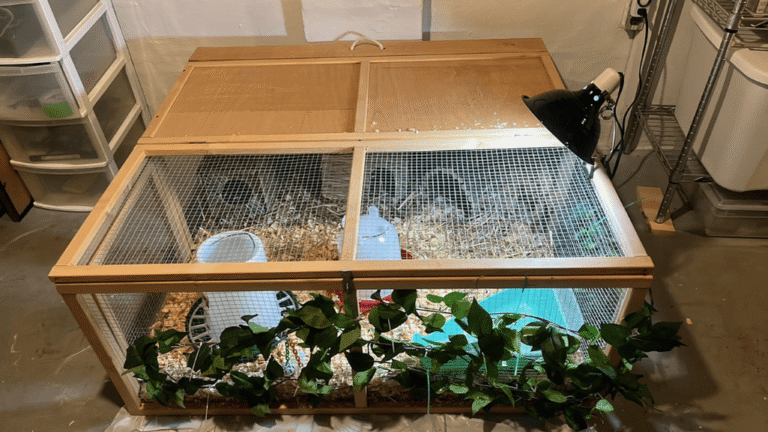Step into a living kaleidoscope. This tropical relative of North America’s famous turkey dazzles with a baby-blue head dotted by red-orange nodules and metallic plumage that shifts from electric blue to green.
The bronzy-orange and white wing bands and a peacock-like tail give this bird its striking name and make it one of the region’s most colorful species.
Its range is limited to the Yucatán Peninsula, including parts of Mexico, northern Belize, and Guatemala’s Petén. The IUCN lists its conservation status as Near Threatened because of habitat loss and hunting pressure.
Ancient Maya revered these birds for their iridescent feathers, and today strongholds remain in protected parks such as Tikal. For clear, field-tested information and context, see this concise profile at ABC Birds.
Key Takeaways
- Showy appearance: metallic plumage, blue head, and eye-like tail spots make this bird unmistakable.
- Restricted range: found mainly across the Yucatán Peninsula and nearby lowlands.
- Near Threatened: habitat loss and hunting have reduced populations in many areas.
- Cultural link: long valued by Mayan cultures and still visible around ruins like Tikal.
- Conservation focus: protected areas and informed management help sustain key populations.
Meet Meleagris ocellata: Identity, Colors, and the Story Behind the Name
Iridescent and compact, Meleagris ocellata looks like rainforest light poured over feathers. This species glows with bronze-green body plumage and a baby-blue head rimmed by a red eye-ring and orange-red nodules.
Males average about 4.5 kg and 0.9 m; females weigh near 2.7 kg. Males carry a blue crown dotted with yellow-orange warts that enlarge in breeding season and sports ~3.8 cm spurs on dark red legs.
What makes this species unique
Tail feathers are bluish-gray with blue-bronze ocelli and bright gold tips. The eye-like spots give the name its poetry—ocelli meaning “eye.” Courtship includes wing shaking, ground rapping, and a striking spread of tail feathers.
How it compares to the wild
Smaller than the wild turkey, this bird has a shallower gobble and far more electric, iridescent plumage. Its display feels peacock-like; in Spanish it is sometimes called pavo real.
“A living jewel of the Yucatán: showy in color, urgent in conservation.”
- Field marks: baby-blue head, bronze-green body, gold-tipped tail feathers.
- Status: IUCN lists this species as Near Threatened.
Range, Habitat, and Daily Life in the Forests of the Yucatán
Across the Yucatán lowlands a crescent of life marks the preferred range of this species. They occur in Mexico’s Yucatán Peninsula, northern Belize, and Guatemala’s Petén, slipping through dappled shade and open edges.
Where they live and the habitats they use
They favor lowland evergreen and tropical deciduous forest, but they also use savannas, marshes, abandoned farmland, and clearings during the breeding season.
That mosaic of habitat — intact forest, edges, and open areas — supports feeding, nesting, and roosting needs across different areas.
Behavior and daily movement
Diurnal by habit, these birds forage on the ground beneath thick understory. They run swiftly when disturbed and make strong flights to tree roosts each night.
Flocks shift with the season: groups swell outside breeding and thin as males and females take on nesting roles.
- Range arcs across the peninsula into northern Belize and Petén.
- Forest mosaic and open patches are essential for feeding and breeding.
- Vocal behavior favors subtlety: low drumming, a brief gobble, and nasal cluck-putt alarms.
“Intact, connected habitats are the living infrastructure these birds need.”
For a concise regional profile, see the regional profile.
Breeding Season, Diet, Predators, and Conservation Status
February marks the start of courtship. From February to April, males parade across clearings, shaking wings and rapping them on the ground. By April, females begin nesting in shallow ground scrapes hidden beneath dense vegetation.
Breeding timeline and nesting
Hens lay between 8 and 16 eggs and incubate for about four weeks. Chicks are precocial and follow the hen soon after hatching. Survival during breeding varies; monitored sites report female survival near 60–75% and poult survival much lower.
Males, displays, and the role of females
Males strut with tail spread, fluff their back feathers, and emit a distinct, shallower call. They may mate with multiple females. Females choose nest sites and guard eggs until the young are ready to follow her.
Diet and foraging
These birds feed on seeds, fallen fruits, leaves, and a variety of insects, including leaf-cutter ants. They use clearings, farm edges, and waste corn in fields to supplement their diet.
Predators and human pressure
A broad predator guild—jaguar, puma, margay, ocelot, gray fox, coati, raptors, snakes, and raccoon—threatens adults and poults alike. Human hunters take birds for subsistence and sport, increasing mortality across parts of the range.
Conservation status and community solutions
The IUCN lists the species as Near Threatened due to habitat loss and hunting. Protected areas like Tikal and reserves in Belize and Mexico sustain stronger populations.
- Managed hunting: community ejidos and permits can align local livelihoods with conservation.
- Protected areas: parks and reserves improve breeding success and long-term status.
- Cultural resonance: Mayan reverence and the bird’s presence near ruins keep heritage linked to habitat care.
“Heritage and habitat thrive together when people steward both wisely.”
Conclusion
From Tikal’s trails to Belizean reserves, the ocellated turkey remains a vivid emblem of Yucatán life. Its blue head, eye-like spots on the tail, and iridescent feathers make the bird unforgettable. This presence also signals the state of nearby forest and habitat areas.
Conservation gains come where communities align livelihoods with protection. Managed hunting and ejido programs show local progress and practical paths forward.
Learn, visit, and support places that protect species and seasonally critical connections. With clear information and steady stewardship, we can help this Near Threatened meleagris thrive while honoring the role females play on the ground and keeping this wild turkey’s story bright for future visitors and birds alike.


